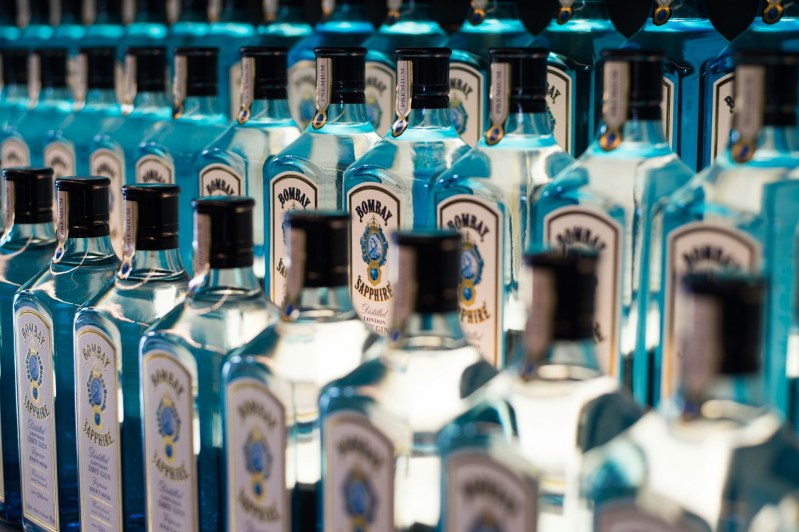
Born in the Canadian city for which it is named, the Vancouver is a fairly obscure cocktail that nearly went extinct. Its serendipitous rediscovery some 15 years ago has aided its rise among the cocktail-loving cognoscenti. When made properly, the combination of gin, Bénédictine, sweet vermouth, and
How to make the Vancouver cocktail

Ingredients:
- 2 ounces gin
- 1/2 ounce sweet vermouth
- 1/4 ounce Bénédictine
- 2 dashes of orange bitters
- Lemon twist (for garnish)
Method:
- In an ice-filled mixing glass, combine ingredients.
- Stir until everything is well chilled (about 30 seconds).
- Strain into a cocktail glass.
- Garnish with the lemon twist.
Twists on the Vancouver cocktail
The classic Vancouver cocktail is also a great base for a drink with a twist. Here are some ways you can put a new spin on this classic, vintage drink.
Fruity twist
Swap the lemon twist garnish for a muddled fruit like raspberries, blueberries, or even a slice of grapefruit. This will add a pop of color and fruity flavor to the drink. You can also infuse your gin with fruit beforehand. Steep a few raspberries or blueberries in your gin for a day or two for a subtle berry infusion.
Herbal twist
Instead of
No matter which twist you choose for the Vancouver, remember to adjust the sweetness or tartness depending on the fruit or bitters you use.
Legends of a cocktail

Like any good mixed drink worth its bitters, the origin of the Vancouver is shrouded in mystery. The date of its revival, however, is better known. In 2006, a bartender named Steve da Cruz was slinging drinks in a Gastown bar when an elderly gentleman dressed as a cowboy appeared. Enter Josiah Bates. A gifted storyteller and lover of a well-made drink, Bates began sharing old-fashioned drink recipes in a thick Scottish brogue. On a later visit, he wrote down the name of the Vancouver cocktail and its method of preparation, saying that it was all the rage at the Sylvia Hotel, when he and his mates gathered there in the 1950s.
Da Cruz was intrigued. He visited the still-functioning Sylvia Hotel, and no one knew what he was talking about. Upon further investigation (and a trip to City Hall), he found that in 1954, the Sylvia Hotel was the first establishment in Vancouver to be granted a cocktail lounge license. Quite likely, the Vancouver was created to celebrate the Sylvia’s newfound status. Da Cruz then spread the gospel of this newly reborn cocktail, and the drink’s popularity spread all across the province.
Further back in time
As far as revival stories go, the reappearance of the Vancouver was a good one — particularly since the herald of forgotten drinks came courtesy of a man who wore ostrich-skin boots and a ten-gallon hat and spoke like Sean Connery.
The story, though, took a twist in 2020, when bartender and cocktail historian Alex Black stumbled upon a book published in 1925 entitled About Town, which cataloged some of Vancouver’s most popular drink recipes. In it, Black found a recipe for the Vancouver by Joseph Fitchett, “head bar steward” of the Vancouver Club. Fitchett’s recipe, interestingly enough, called for French (dry) vermouth rather than Italian (sweet) vermouth. Another recipe in the book listed as “the Fitchett” was essentially the Vancouver that da Cruz, via Josiah Bates, resurrected. Since this news — earth-shattering for some Canadian drink makers, a bit of trivia for others — bartenders must now decide whether to go sweet or dry when making the Vancouver. Some even split the difference, serving up equal parts of both vermouths.
Tinkering toward perfection
In truth, as with any vintage cocktail, a bit of experimentation can lead to superior results when it comes to the Vancouver. You can dial back the Bénédictine for a less sweet concoction (some recipes call for a mere spoonful of the aromatic liqueur) and go drier still by subbing in dry vermouth for sweet vermouth. A distant relative of the Vancouver, the Martinez jettisons Bénédictine altogether and features equal parts gin and sweet vermouth, along with a few dashes of maraschino liqueur and



